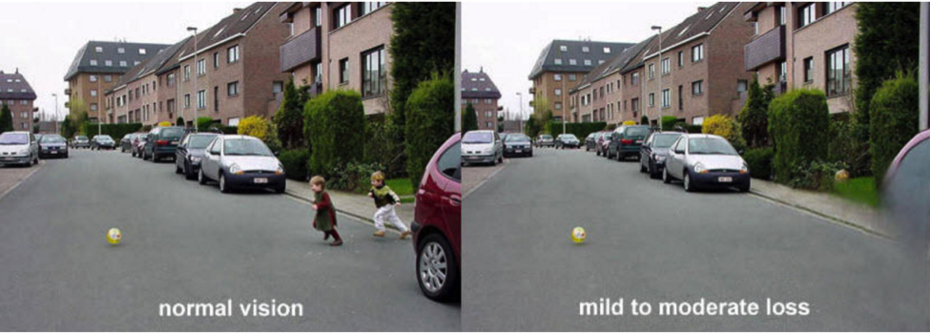Glaucoma is the sneak thief of sight. Even though it is one of the leading causes of vision loss in Australia 50% of glaucoma sufferers remain undiagnosed because there are no symptoms of this disease until it is too late - glaucoma-related vision loss is permanent and irreversible.
Glaucoma is a group of conditions where:
- High pressure inside the eye (analogous to tyre pressure).
- Damages the optic nerve (the cord that plugs your eye into your brain).
- Causes peripheral vision loss (or “tunnel vision” which affects our mobility).
- Can continue to cause total blindness if untreated.
What are the risk factors of glaucoma?
- Glaucoma can be diagnosed at any age, although the risk of glaucoma increases with age:
- 1 in 10,000 babies are born with glaucoma
- 1 in 200 at 40 years of age have glaucoma
- 1 in 8 at 80 years of age have glaucoma
- Family history of glaucoma - first degree relatives have a 1 in 4 chance of developing glaucoma in their life
- High intraocular pressure (greater than 21 mmHg carries a 50% risk of glaucoma)
- African or Asian ethnicity
- Diabetes
- Short sighted (open angle) or long sighted (closed angle)
- Prolonged use of steroid medications (especially eye drops)
- Migraines or circulation disorders (eg Raynaud’s syndrome)
- Previous eye operations or major eye injury (eg penetrating eye injury)
- Abnormal blood pressure (too high or too low)
How is glaucoma diagnosed?
Early diagnosis is critical to preserve the future of your vision because glaucoma causes permanent and irreversible vision loss. There are advanced diagnostic tests are effective in early detection of glaucoma:
- OCT analysis (Optical Coherence Tomography): This is a sophisticated optic nerve imaging technique with computerised data analysis. This is the most effective way to detect glaucoma in the early phases.
- Computerised visual field analysis: This maps your peripheral vision using advanced statistical analysis.
- Applanation tonometry: This is the most accurate method of checking the pressure inside your eyes. This procedure is:
- Painless (usually involves a mild numbing drop which lasts approximately 20 minutes)
- Fast (takes less than 10 seconds to take a measurement)
- Does not involve an uncomfortable “puff of air”
How is glaucoma treated?
- Medications - most commonly, glaucoma is treated with eye drops to reduce the pressure inside the eye. Vitamin B3 (nicotinamide) may also help to protect the optic nerve from glaucomatous damage.
- Laser - Selective Laser Trabeculoplasty (SLT) and peripheral iridotomy can be used to “zap a hole” to improve drainage of intraocular fluid out of the eye.
- Eye surgery can be used to increase drainage out of the eye through Schlemm’s canal (the “drainage channel” of the eye) and decrease the pressure inside the eye
- MIGS (Minimally Invasive Glaucoma Surgery) is when a very small stent is implanted into Schlemm’s canal
- Trabeculectomy is when a surgical incision is made directly into Schlemm’s canal
- Glaucoma drainage devices these are surgically implanted tubes
Glaucoma is one of the leading causes of blindness in Australia and can only be detected in the early phases with regular comprehensive eye examinations, at least once every two years. Early detection and treatment of glaucoma preserves the future of your vision. If you’re concerned about glaucoma or have any other vision concerns, come and see us at Heron Eyecare for a comprehensive eye examination.



